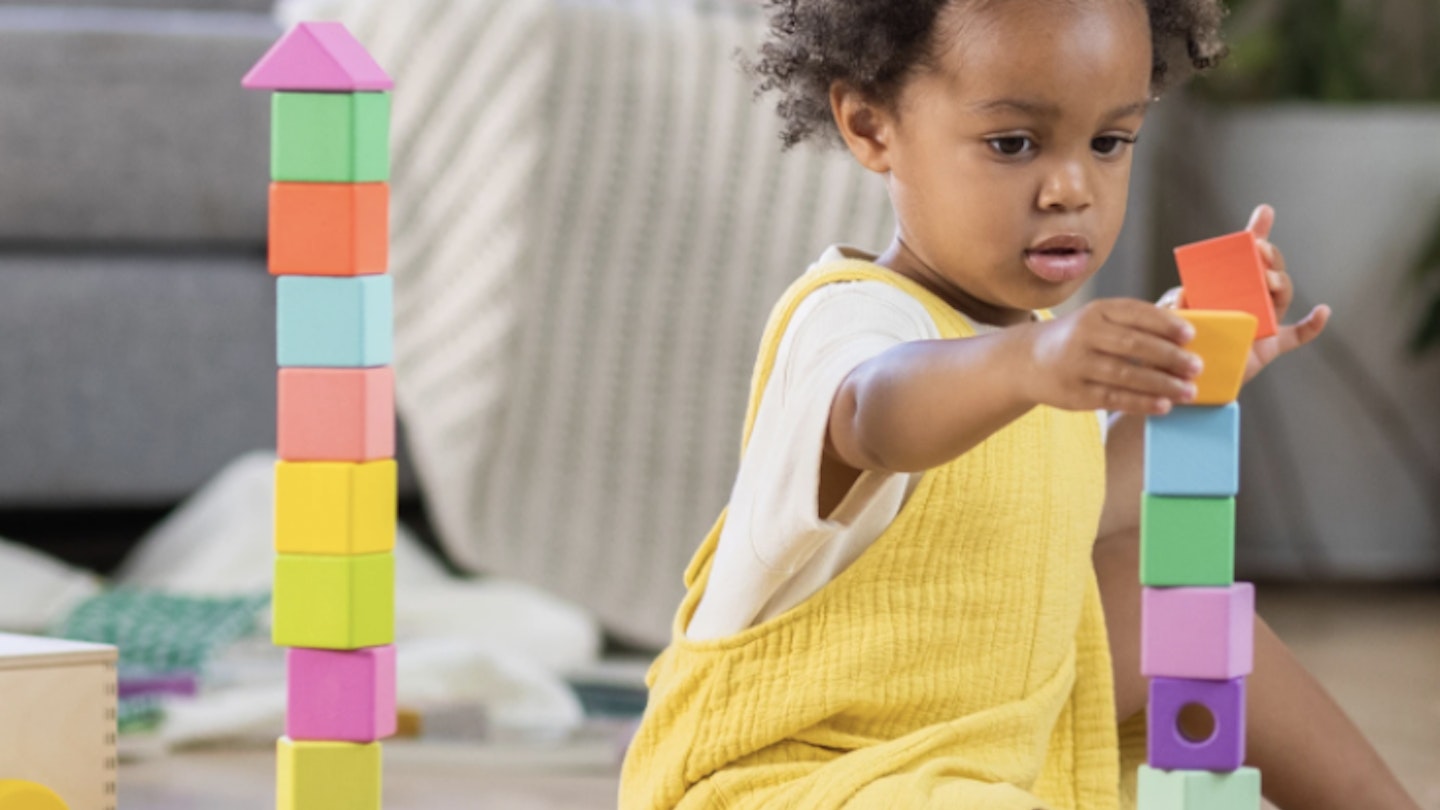If you’re a parent, you have almost definitely felt exactly how Jessica Rolph, the CEO and co-founder of toy company Lovevery felt when the idea for her new business was born. Rolph, who lives in Boise, Idaho, says, ‘When my eldest was a baby, I remember watching him play with one of those plastic toys with flashing lights. I found myself wondering, what is this toy supposed to do for his development?’ With a successful organic baby and toddler product company already behind her, Happy Family, when she had her first baby Rolph searched out a thesis by Dr William Stasso on infant brain development, which was full of ideas of things she could do with her child. ‘We would go on “house tours” and find all the places with water, or turn all the lights on and off. My baby absolutely loved it, and it felt meaningful to me, too. I started tuning into what my baby really wanted to do. I watched him pull out and eat tissues from a tissue box and found myself wishing I could make one out of wood and fabric instead. He spent many happy minutes dropping a ball through a plastic tube my husband assembled from PVC pipe, and I thought, this tube should be clear, so my baby can see the ball dropping through.’
And so, in 2015, Lovevery was born: offering age specific Montessori-style wooden toys and subscription style play kits with toys designed to be used on rotation, with development and stimulation firmly in mind. My 20-month-old has two of the play kits and I can safely say they are his most played with toys: they’ve provided hours of fun (and were the perfect things to take on holiday as they keep him so well occupied - with no flashing lights or noises to disturb others on a plane!).
https://www.instagram.com/reel/CyVBj5fsMKH/?igshid=MzRlODBiNWFlZA%3D%3D
Here, Jessica Rolph goes into more detail about the company and why she’s so proud of what they’ve achieved.
How do you ensure that each Lovevery package is right for the age group?
Children are unique in so many ways, but we know that predictable developmental windows are constantly opening and closing, and that the first 5 years of life are crucial for healthy brain development. The Play Kits are grouped by developmental window. For the first year, those windows are short, because so much is happening so quickly, so The Play Kits are delivered every 8 weeks. At age 1 and beyond, the developmental windows are wider, so The Play Kits are delivered every 3 months. To make sure we’re tapping into the right areas of growth for each developmental stage – so not just what a child is interested in, but what will push them to grow – we work with a range of practitioners and researchers spanning education and neuroscience. That means we’re working with experts in early STEM and maths learning, speech and language pathology, Montessori, occupational and physical therapy, psychology, and more.
What have been the biggest moments since you launched?
My family can tell you, there is nothing more exciting to me than being at an airport or at the supermarket and seeing a parent with a young child. I can’t help it: I make a bee-line and go right up to them. I always offer a coupon to Lovevery, but as the company has grown, more often than not, I discover that they are already customers. To me, that’s the pinnacle of success: making an impact in homes across the world.
What advice would you give to parents who struggle to pick suitable toys for their children?
It can feel overwhelming at times to sift through advice, competing perspectives, and an endless scroll of shopping options. Especially with those questions in the back of your head: will my baby actually want to play with this? Will it help them learn, or just be a distraction? .
What advice would I give to parents going through that struggle? Fewer is better when it comes to toys. Research supports this: a study compared how children played when offered 4 vs. 16 toys in a room. Toddlers who were offered 4 toys engaged more meaningfully with each, playing in a deeper way and spending more time exploring than toddlers who had 16 available toys.
What’s next?
We have just launched our Book Bundles for Play Kit subscribers in the U.K. and Europe! Book Bundles are additional book titles delivered with each Play Kit to support parents with some of the big moments in a child’s early years, like going to the dentist, potty learning, or the challenge of sharing with a sibling.
